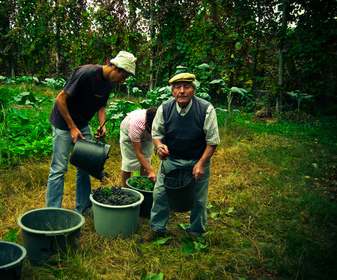History

Several less successful attempts at introducing European vines into Brazil were made during the centuries. The first vines were brought to Brazil by the Portuguese in 1532, who planted them in the state São Paulo. Jesuits brought Spanish vines to Rio Grande do Sul in 1626, and 18th century settlers from the Azores brought vine cuttings from Madeira and the Azores. 1840 plantations of Isabella (a cultivar of the species Vitis labrusca) on the south coast of Rio Grande are considered the first successful vine plantations in Brazil. By the late 1870s, winemaking was more definitely established and had taken hold in Serra Gaúcha, where Italian immigrants did much of the vine-growing, and mostly American vines were produced. Some Italian varieties and Tannat were later added.[1]
Wine production with higher quality ambitions started in the 1970s, when several international wine companies[which?] invested in Brazil and brought in know-how and modern equipment.
References
Wine production with higher quality ambitions started in the 1970s, when several international wine companies[which?] invested in Brazil and brought in know-how and modern equipment.
References
- ^ a b Jancis Robinson, ed (2006). "Brazil". Oxford Companion to Wine (Third Edition ed.). Oxford: Oxford University Press. pp. 102–103. ISBN 0-19-860
